Semolina is a flour made from durum wheat, and while it is unique, it’s not too difficult to substitute in a pinch.
This flour is used worldwide in everything from breads to pasta to flavorful cakes. With its high gluten content and full-bodied taste, you have many options for worthwhile substitutes.
As a career baker, I’ve been able to work with semolina and a wide range of other flours. And in this list, you’ll learn the flavor of each substitute and what to expect when using it.
Most of these options can be used at a 1:1 ratio to replace semolina flour. The only exceptions are quinoa and brown rice flour, and I’ll also explain how to use those.
In This Article
10 Tasty Semolina Flour Substitutes
1. Fine Cornmeal
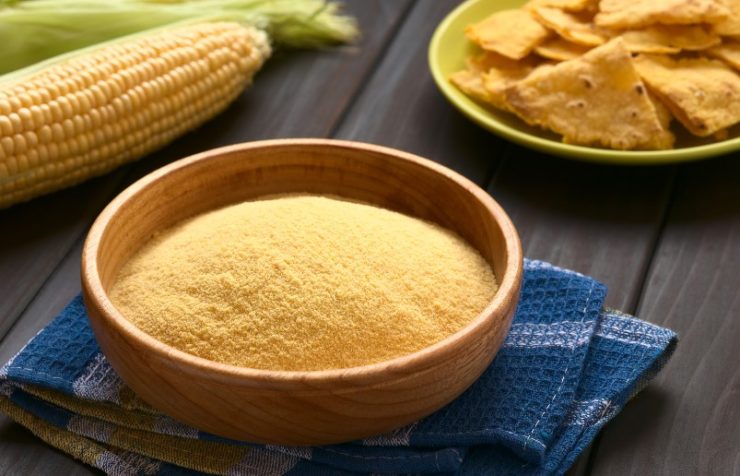
Fine cornmeal is a close match for semolina flour. Use it in pizza doughs, breads, and cakes. It’s also a perfect substitute to use in crunchy breadings.
This gluten-free substitute has the closest taste and texture to semolina. Plus, it’s easy to find, cheap, and has a long shelf life.
Since it’s made from corn, it may not be your ideal substitute if you don’t want the flavor of corn in your recipe.
2. All-Purpose Flour
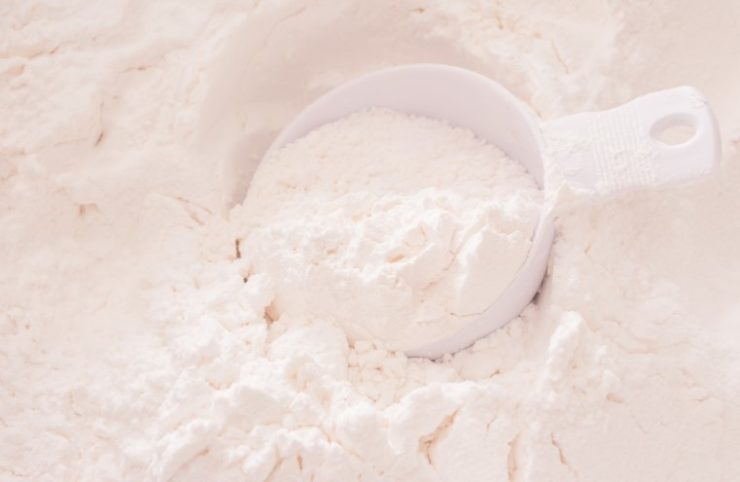
This simple semolina flour substitute is ideal for baked goods, breads, and pasta.
All-purpose flour is easy to use and readily available. Since this flour has a lighter texture than semolina, your baked goods will also have a different texture.
If you’re using this substitute for pasta, be aware that this softer flour contains less gluten than semolina. This means that pasta made with all-purpose flour will get mushy faster once it’s boiled.
So be sure to test your pasta frequently while cooking and serve immediately for the best results.
3. Garbanzo Bean Flour
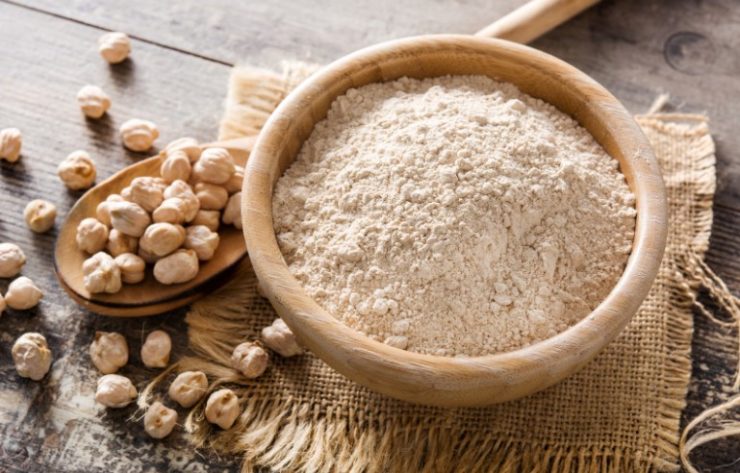
Garbanzo bean flour is a key ingredient in many Indian and Italian recipes. This multi-purpose substitute for semolina flour works wonders in pasta, flatbread, and baked goods.
Naturally gluten-free, garbanzo bean flour is high in protein. Its marvelous binding ability means it will usually function in recipes without the need for eggs.
This flour can have a beany taste, so if that’s not your thing, consider using a blend of flours for your recipe.

Pro Tip: For flatbreads made with chickpea flour, let the batter sit at room temperature for an hour or more after mixing. This allows the chickpea flour to soak up the moisture and makes for softer bread.
4. Durum Flour
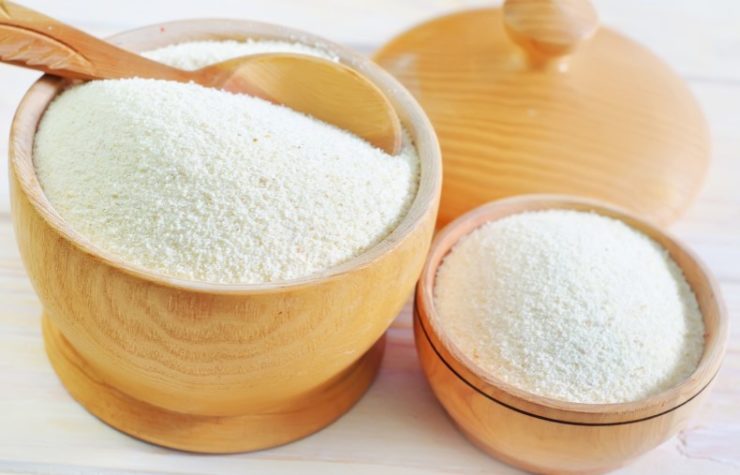
Durum flour is made from the same type of wheat as semolina flour but is less coarsely milled. Use it in breads and pasta for a similar flavor.
It’s high in gluten, like semolina flour, which means it will hold up great in boiling water. It’s also strong enough to rise well in yeasted bread.
Due to that high gluten content, durum flour is not recommended for pastry-type items as it will make them tough and dense.
5. Spelt Flour
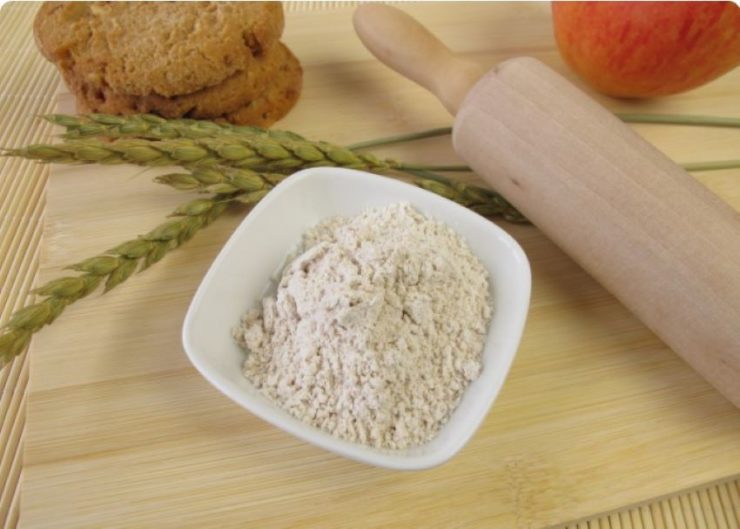
Spelt flour is a great option for making toothsome baked goods, pancakes, and yeasted breads. It’s also an ancient grain, which means it hasn’t been genetically modified or cross-bred and is more nutrient-dense.
Spelt’s whole-grain nutrition gives it a delicious, wholesome flavor. It’s a little sweet and a touch salty.
This is a glutinous grain and will produce a different texture than semolina flour. It can be a touch gummier when used in yeasted breads but still yields tasty results.
6. Whole Wheat Flour
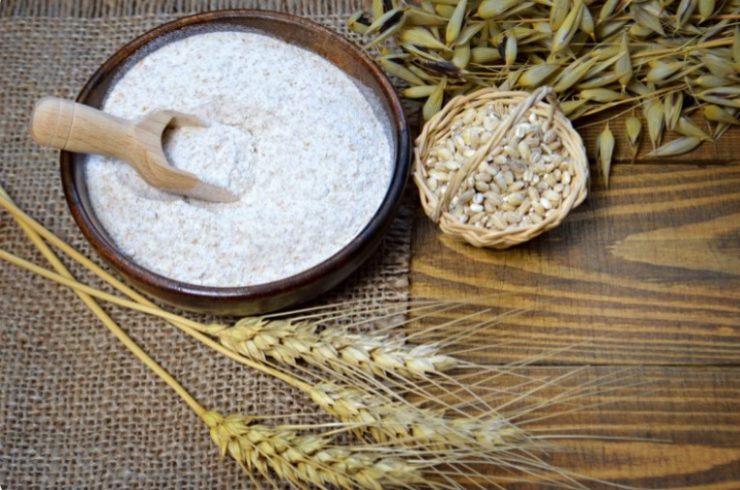
Whole wheat flour can replace semolina in recipes where you don’t mind a hearty flavor. It’s excellent in pizza dough, baked goods, and breads.
This flour is a baking classic for a reason. Its high nutrition content creates a warm, rustic flavor and substantive texture.
While it can replace semolina in some recipes, this flour will create a heavier texture than semolina. It tends to make baked goods denser and doughs stickier.
Whole wheat can be used as a 1:1 replacement. But, if you want a lighter texture, try using it as only 50% of the flour in your recipe.

Pro Tip: For a better rise in yeasted breads, sift whole wheat flour before adding it to your recipe.
7. Bread Flour
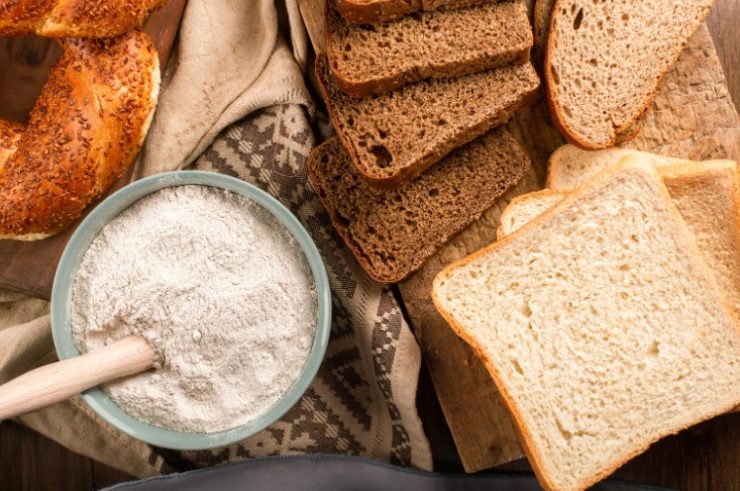
Bread flour can yield a similar result to semolina in pizza dough, flatbreads, and pasta recipes.
Thanks to its high gluten content that’s close to semolina, it’s sturdy enough to hold up in yeasted products. It also holds its shape well in pasta recipes.
Because bread flour is finer in texture, it may be slightly less elastic than semolina pasta. But the difference won’t be very noticeable.
8. Kamut Flour
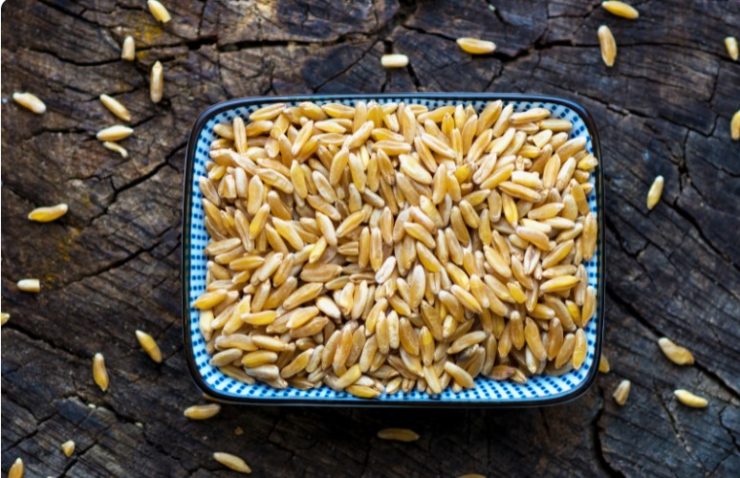
Here’s another semolina flour substitute made from an ancient grain. It’s delicious in breads, baked goods, and pizza dough. Try it in pasta for added flavor, too.
Kamut has a buttery flavor and lots of built-in nutrition. It can be easier for some people to digest, so it’s worth trying if that’s important to you.
Unfortunately, Kamut flour can be difficult to find in some areas. And it can make recipes a bit on the dry side, so be prepared to add a little extra liquid or egg if needed.

Pro Tip: Your best bet to find Kamut flour is to visit your local organic grocery store or co-op.
9. Quinoa Flour

Quinoa flour is a gluten-free substitute option that’s great in baked goods. It even makes great pasta and can be used as a thickener in soups and sauces.
This substitute offers a lot with its high protein content and light texture. It melds well with both savory and sweet recipes too.
Since it’s gluten-free, quinoa flour can make baked goods crumbly. So you may have better results using this flour as a blend with other starches to replace semolina.

Pro Tip: If you’re experimenting with gluten-free pasta recipes, consider using a mix of quinoa and brown rice or corn flour. They work very well together.
10. Brown Rice Flour
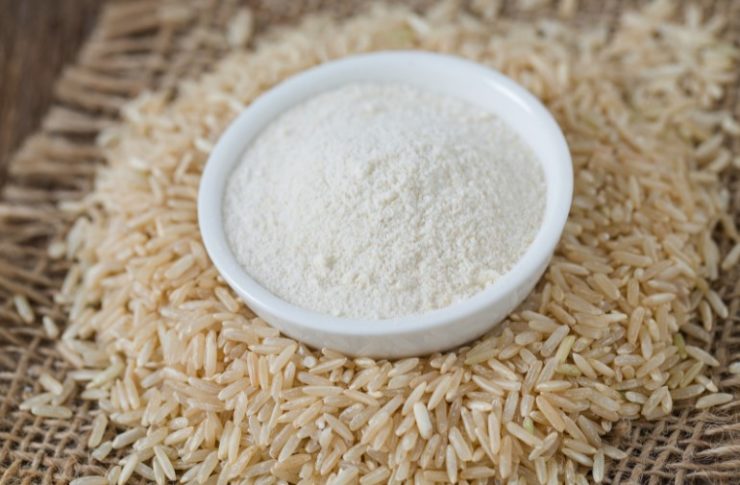
Brown rice flour is a great option to replace semolina flour. It can function in recipes for pasta, baked goods, and flatbreads. Also, try using it as an alternative thickener for soups and stews.
This gluten-free flour is whole-grain and has a pleasant, nutty flavor. However, its lack of gluten means it can be tricky to work with as a substitution.
Brown rice flour can be a “thirsty” flour, so it can make baked goods dry and crumbly. You’ll likely need a blend of flours and starches to use it successfully in place of semolina flour.
Final Tips For Working With Semolina Flour Substitutes
When working with substitutes for semolina flour, nothing will taste quite the same. Fine cornmeal and durum flour come close. But otherwise, be ready for a new flavor profile in your recipe.
Who knows, you might even end up with a new favorite after trying a flour you’ve never worked with.
Also, consider the gluten content of the replacement you choose, as it can make a big difference in your outcome. Working with high-gluten flours will be easier to use as direct substitutes. Lower-gluten flours can be used, but they’ll have slightly different rising and cooking times.
Gluten-free flours require more tweaking and experimentation but can indeed work as semolina substitutes.
Consider searching for recipes similar to your original one with semolina that contains the gluten-free flour you want to use. This can save you some time and decrease the experimentation that you may otherwise have to do.
Frequently Asked Questions
What is the best substitute for semolina flour in pizza dough?
Fine cornmeal is a close second to semolina in pizza dough.
What is the best substitute for semolina in pasta?
Bread flour can be used in place of semolina for pasta. It’s high in gluten like semolina flour but will yield a slightly different taste and texture.
How is semolina flour different from regular flour?
Semolina flour is made from durum wheat, which is higher in protein (gluten) than all-purpose flour, at 13%. It also has a darker color and more flavor.






